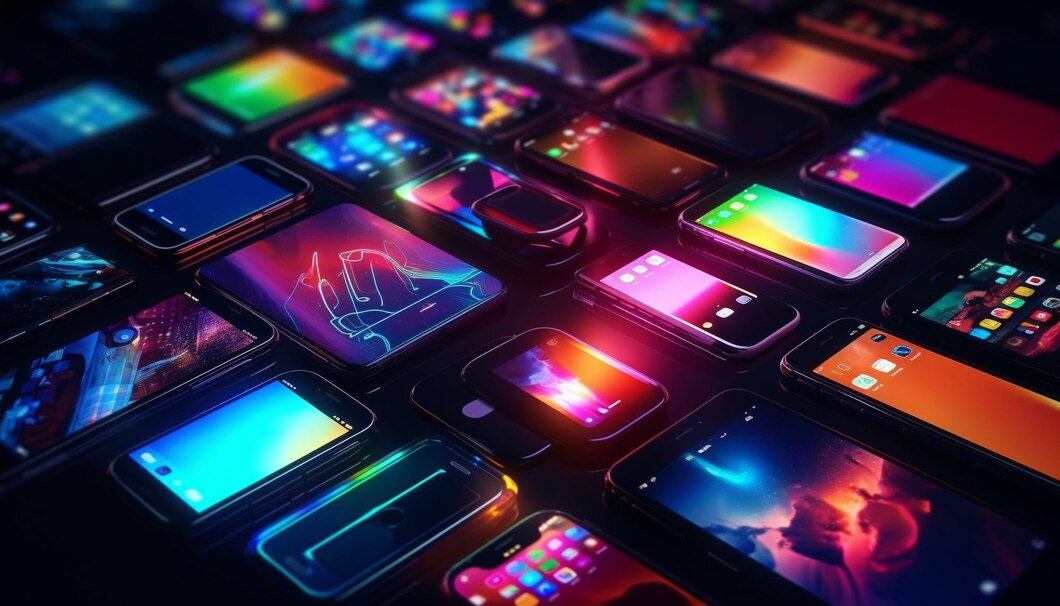Table of contents
The Evolution of Mobile Technology has transformed the way we live, work, and connect. What began as bulky, basic communication devices has rapidly progressed into sleek, intelligent gadgets that now include not only smartphones but also wearable tech like smartwatches and fitness trackers. This journey through innovation reflects humanity’s constant push for greater connectivity, portability, and efficiency.
In this blog post, we’ll explore the key milestones in the evolution of mobile technology, how wearables are shaping the future, and what we can expect in the coming years.
A Brief History of Mobile Technology
1. The Early Days: 1980s – 1990s
The first generation (1G) mobile phones were introduced in the 1980s. These were large, heavy, and limited to voice calls. By the 1990s, 2G technology brought digital signals, SMS messaging, and better call quality. This marked the beginning of mobile phones becoming a consumer product rather than a luxury.
2. The Rise of Smartphones: 2000s
With the arrival of 3G networks and devices like the BlackBerry and the iPhone, the mobile phone became a mini-computer. Users could access email, browse the internet, and use apps—an entirely new mobile ecosystem was born.
3. The 4G Revolution: 2010s
4G LTE brought high-speed data, enabling smoother video streaming, real-time gaming, and seamless browsing. The Evolution of Mobile Technology took a major leap, transforming smartphones into essential tools for both personal and professional use.
The Advent of Wearables: A New Chapter
Wearable technology emerged as a natural extension of smartphones. Devices like the Apple Watch, Fitbit, and Samsung Galaxy Watch changed how users interact with their health, time, and digital life.
Key Features of Wearables:
- Health Tracking: Heart rate, sleep, step count, and even ECGs.
- Notifications: Instant updates without checking your phone.
- Fitness Assistance: Personalized workouts and activity monitoring.
- IoT Integration: Connects with smart home devices and ecosystems.
Wearables are becoming more than accessories—they’re health companions, productivity tools, and even fashion statements.
The Role of 5G and Edge Computing
The integration of 5G technology is another major step in the Evolution of Mobile Technology. With ultra-fast download speeds, low latency, and higher device capacity, 5G enables wearables and smartphones to operate faster and smarter.
Edge computing brings processing power closer to the device, allowing real-time analysis and responses without relying on distant cloud servers. This is particularly important for wearables used in healthcare or industrial settings.
Future Trends in Mobile and Wearable Tech
As we look ahead, several exciting trends will continue to shape this evolving landscape:
- Foldable Phones: Offering large displays without increasing pocket size.
- Augmented Reality (AR): Enhanced experiences via AR glasses or smart lenses.
- Biometric Advancements: Improved security through voice, retina, and gait recognition.
- Sustainable Materials: Eco-friendly devices made with recycled components.
- AI-Powered Personal Assistants: More personalized and intuitive interaction.
The next phase in the Evolution of Mobile Technology will likely blur the lines between device and human experience.
How Mobile Technology Impacts Daily Life
Mobile devices now influence every aspect of our lives:
- Work: Remote collaboration, emails, and video calls on the go.
- Health: Monitoring heart rates, calories, and sleep cycles.
- Finance: Mobile banking, investing, and contactless payments.
- Entertainment: Streaming, gaming, and social media in your pocket.
- Navigation: GPS-enabled apps for travel and commuting.
What was once just a phone is now a multifunctional lifestyle hub.
FAQs About the Evolution of Mobile Technology

The shift from feature phones to smartphones, particularly with the introduction of touchscreens and app ecosystems, was the most transformative.
Not yet. Wearables complement smartphones, but aren’t a full replacement due to their limited screen size and input options.
5G allows wearables to perform real-time functions like health monitoring and communication with minimal latency.
With advancements in biometric authentication and encryption, modern devices are increasingly secure—but users should remain vigilant.
We can expect more integration with AI, better sustainability, and possibly even brain-machine interfaces in the long term.
Conclusion
The Evolution of Mobile Technology is a story of rapid innovation, reshaping the digital world from simple voice calls to sophisticated AI-driven wearables. As we embrace more connected, intuitive, and personalized experiences, our devices will become smarter, more integrated, and indispensable to our everyday lives. Whether you’re a tech enthusiast or an everyday user, understanding this evolution helps you make the most of what mobile technology has to offer.





